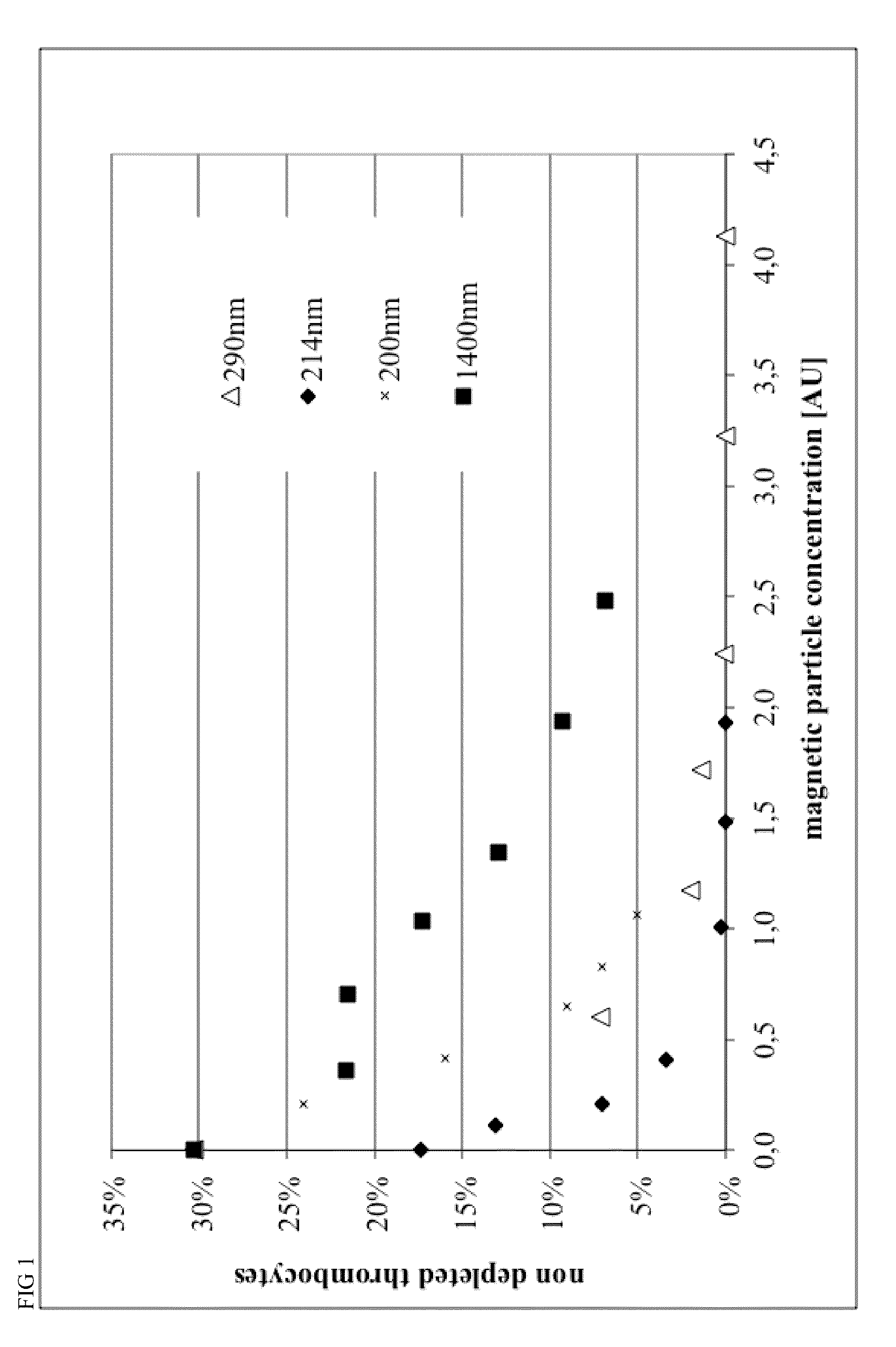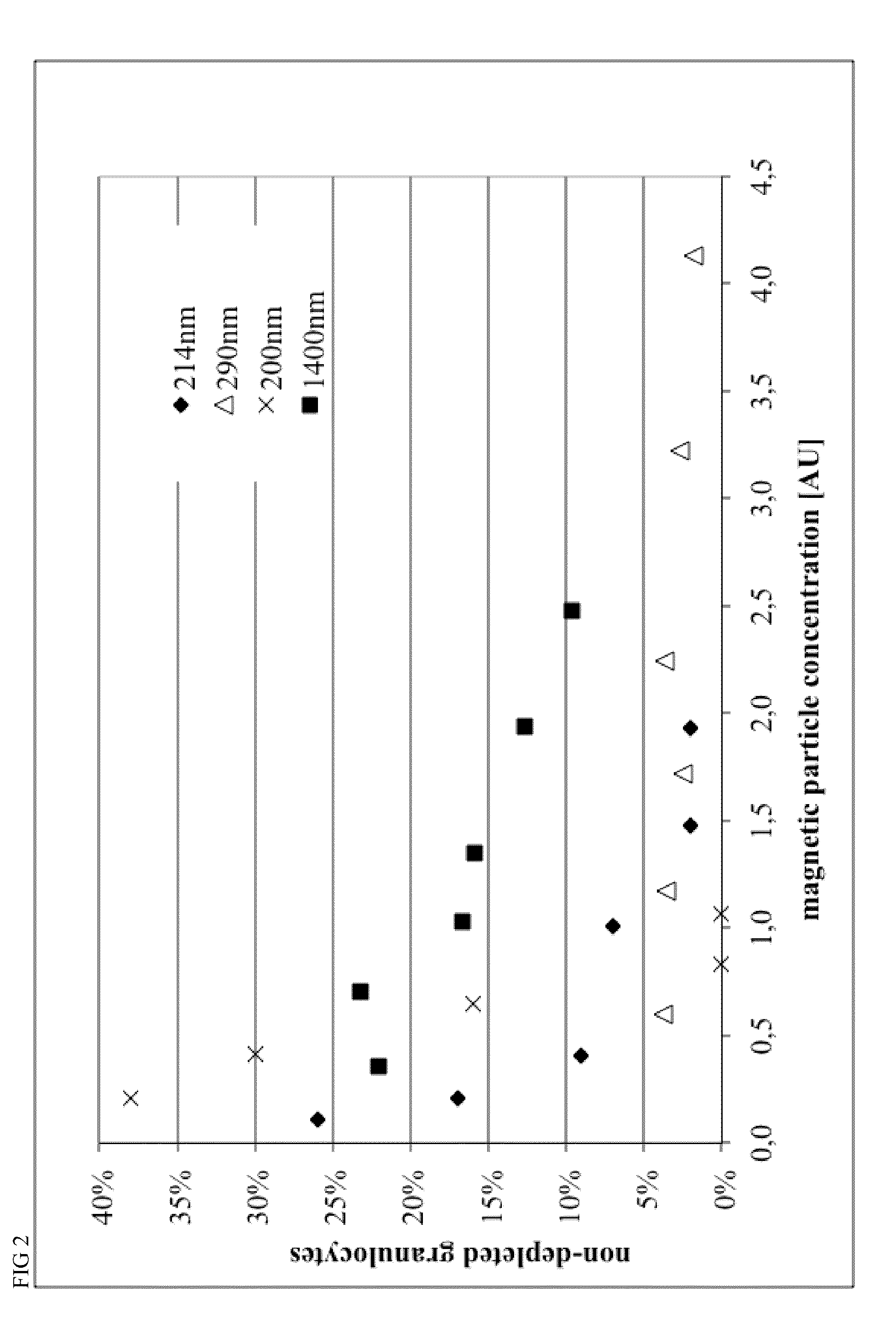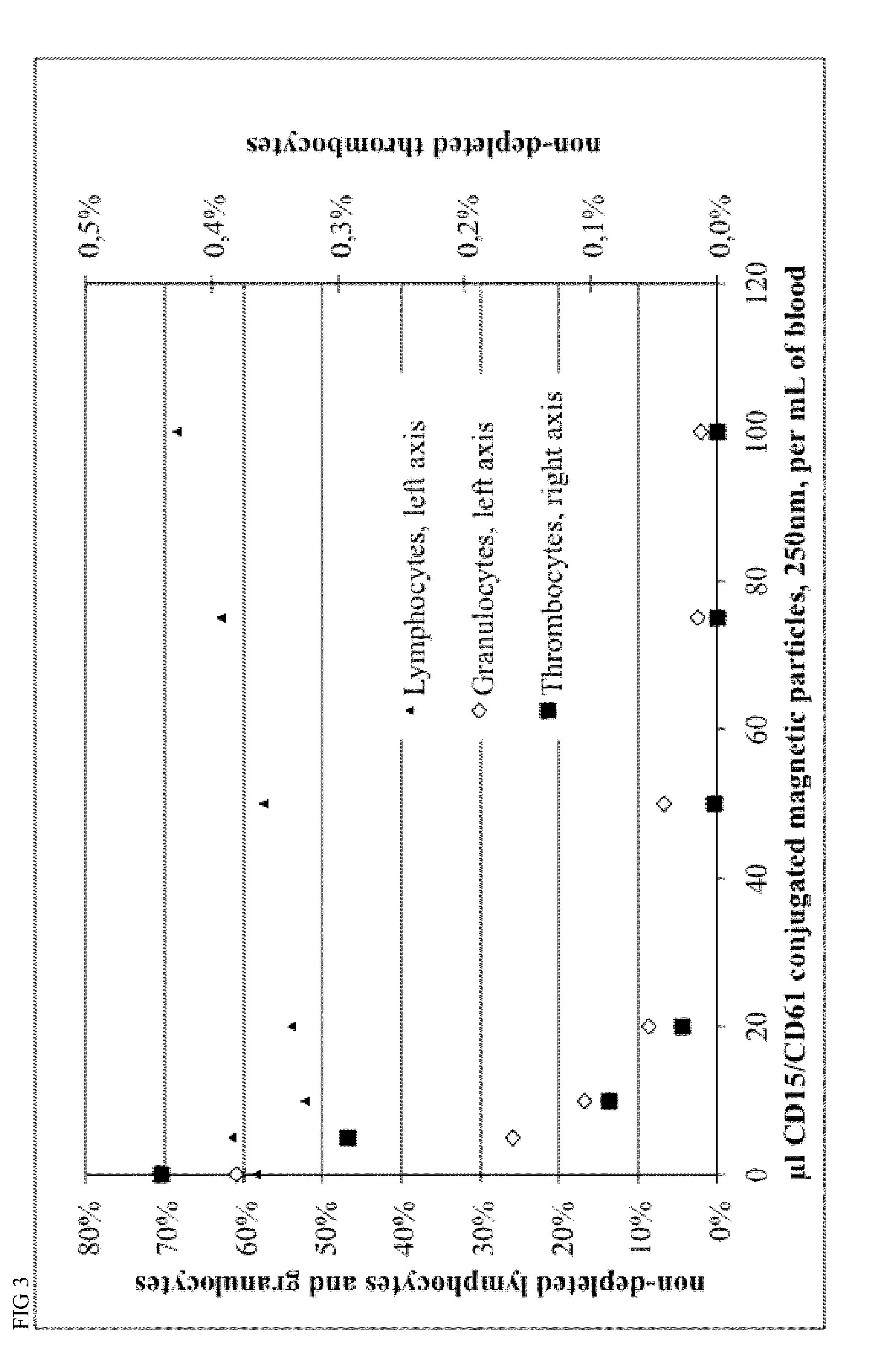Cell separation method
a cell and cell technology, applied in the field of immunology, can solve the problems of time-consuming and laborious centrifugation steps, limited methods to small amounts of cells, and includes a time-consuming and laborious centrifugation step, and achieve the effect of increasing the volume of the supernatant and rapid sedimentation of the cells
- Summary
- Abstract
- Description
- Claims
- Application Information
AI Technical Summary
Benefits of technology
Problems solved by technology
Method used
Image
Examples
example 1
Size of Particles
[0124]Magnetic beads were manufactured with different process parameters according to Example 4, resulting in different size of the particles. Particle size was characterized by Beckman Coulter Delsa Nano instrument. Monoclonal antibodies recognizing CD15 and CD61 antigens were covalently conjugated to magnetic beads in a 1:1 ratio, resulting in 40 ug antibody per mL of bead suspension at a concentration of OD450=10.
[0125]Different amounts of conjugated beads and 0.2 mL of a 2% stock solution of hydroxypropylmethylcellulose were given to 1 mL of Buffy Coat from human whole blood within a 5 mL FACS tube, mixed for 15 minutes within MACSmix™ Tube rotator (Miltenyi Biotec) and placed in a MACSiMag™ Separator for 20 minutes. Supernatant was completely removed using a pipette, transferred to a FACS Tube, cells were counted using a Sysmex KX21 hematology analyzer and cells were analyzed using a MACSquant Analyzer flow cytometer (Miltenyi Biotec).
[0126]Erythrocytes, thromb...
example 2
Mono-Specific Particles
[0128]Monoclonal antibodies recognizing CD15 and CD61 were individually conjugated to magnetic beads (Example 4, average diameter 100 nm). Bead conjugated antibodies were given to 1.3 mL of whole blood, 0.7 mL of PBS buffer and 200 ul of HPMC15 stock solution. Granulocytes and platelets, respectively or combined, were removed for 98% to >99%, (see FIG. 5).
[0129]Monoclonal antibodies recognizing CD19 and CD56 were individually conjugated to magnetic beads (Example 4, average diameter 220 um). Bead conjugated antibodies were given to 1.3 mL of whole blood, 0.7 mL of PBS buffer and 200 ul of HPMC15 stock solution. B cells and NK cells respectively were removed for >98% (see FIG. 6 and FIG. 7).
example 3
Multi-Specific Particles
[0130]Either 2, 3 ,4, 6 or 8 different antibodies were conjugated to either 100 nm or 200 nm magnetic beads (see Example 4) in previously evaluated antibody ratios. Antibody ratios were determined by titrating mono-specific conjugates and determining individually the lowest amount of antibody sufficient for complete removal of a cell subset. The individual antibody concentrations were used to calculate ratios. Bead conjugated antibodies were given to 1.3 mL of whole blood, 0.7 mL of PBS buffer and 200 ul of 2% HPMC15 stock solution, mixed for 15 minutes within MACSmix™ Tube rotator (Miltenyi Biotec) and placed in a MACSiMag™ Separator for 20 minutes. Supernatant was completely removed using a pipette, transferred to a FACS Tube, cells were counted using a Sysmex KX21 hematology analyzer and cells were analyzed using a MACSquant Analyzer flow cytometer (Miltenyi Biotec). More than 92% of the cell populations analyzed were depleted, see FIG. 8.
PUM
| Property | Measurement | Unit |
|---|---|---|
| size | aaaaa | aaaaa |
| size | aaaaa | aaaaa |
| time | aaaaa | aaaaa |
Abstract
Description
Claims
Application Information
 Login to View More
Login to View More - R&D
- Intellectual Property
- Life Sciences
- Materials
- Tech Scout
- Unparalleled Data Quality
- Higher Quality Content
- 60% Fewer Hallucinations
Browse by: Latest US Patents, China's latest patents, Technical Efficacy Thesaurus, Application Domain, Technology Topic, Popular Technical Reports.
© 2025 PatSnap. All rights reserved.Legal|Privacy policy|Modern Slavery Act Transparency Statement|Sitemap|About US| Contact US: help@patsnap.com



